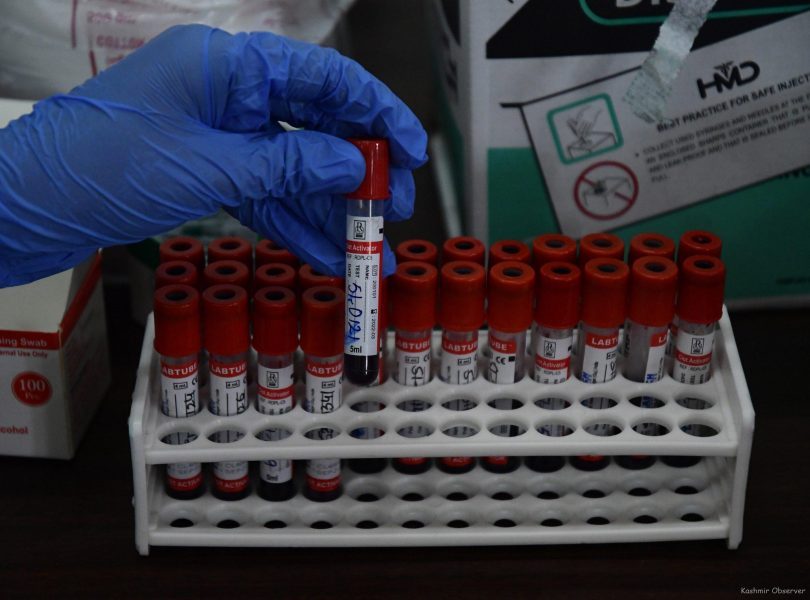
Washington- Researchers have used a minimally-invasive test to identify clots in small blood vessels in the skin of patients with severe COVID-19 that appeared normal, according to a study.
These clots were not seen in the skin of patents with other types of severe infectious lung disease, or in individuals with only mild or moderate COVID-19, the researchers said.
A skin biopsy is a procedure to remove cells or skin samples from for laboratory examination.
The researchers said a skin biopsy can help assess tissue damage related to COVID-19 as well as help distinguish this blood vessel pathology from other forms of severe respiratory illnesses.
Prior to this study, recently published in The American Journal of Pathology, invasive procedures such as nerve, kidney, or lung biopsy would have been required.
“We were the first group to recognise that the lung disease of acute COVID-19 was different from other severe critical respiratory infections, and that the unusual pathology was systemic,” said study lead investigator Jeffrey Laurence, from Weill Cornell Medicine institute in the US.
The researchers collected 4 millimetre (mm) biopsy samples of normal-appearing skin from 15 patients who were in intensive care with COVID-19 and six patients with mild to moderate disease symptoms, such as fever, chills, cough, or shortness of breath.
Biopsy samples from nine hospitalised patients with severe or critical respiratory or kidney disease who died before the COVID-19 era were also included in the study.
The researchers found that microthrombi or small blood clots were detected in 13 of the 15 patients with severe or critical COVID-19.
No microthrombi were detected in the biopsies of patients who had mild to moderate COVID-19 or the pre-COVID-19 era patients with severe respiratory illness or kidney diseases, the researchers said.
It is likely that these microvascular changes may be a unique characteristic of COVID-19 respiratory disorder compared to other acute respiratory diseases, they said.
An antiviral protein capable of blocking SARS-CoV-2 growth, MxA, was found in all six mild to moderate COVID-19 patients, indicating that their immune systems were actively fighting the virus, versus only two patients with severe to critical disease, according to the researchers.
An interferon-induced inflammatory protein, SIN3A, was prominent in the microvascular of normal-appearing skin from patients with severe or critical COVID-19, but not in similar samples from normal control subjects, they said.
Interferons and cytokines are molecules crucial for appropriate response to pathogens, damaged cells, or irritants in inflammatory response.
Increased SN3A levels in plasma and expression in the small vessels of skin were associated with the severity of the patient’s disease and could contribute to the cytokine storm characteristic in such patients.
A cytokine storm is a severe immune reaction in which the body releases too many cytokines into the blood too quickly.
Laurence notes that these results have clinical implications.
“Although anticoagulants were used in the pre-COVID-19 era in sepsis-associated pneumonias to reduce macrovessel thromboembolism, most randomised trials to date have not found this treatment benefits hospitalised patients who are critically ill with COVID-19 acute respiratory distress syndrome.
“These drugs may not be capable of reducing the microvessel thrombosis found with SARS-CoV-2 infection,” he added.
Follow this link to join our WhatsApp group: Join Now
Be Part of Quality Journalism |
Quality journalism takes a lot of time, money and hard work to produce and despite all the hardships we still do it. Our reporters and editors are working overtime in Kashmir and beyond to cover what you care about, break big stories, and expose injustices that can change lives. Today more people are reading Kashmir Observer than ever, but only a handful are paying while advertising revenues are falling fast. |
| ACT NOW |
| MONTHLY | Rs 100 | |
| YEARLY | Rs 1000 | |
| LIFETIME | Rs 10000 | |










